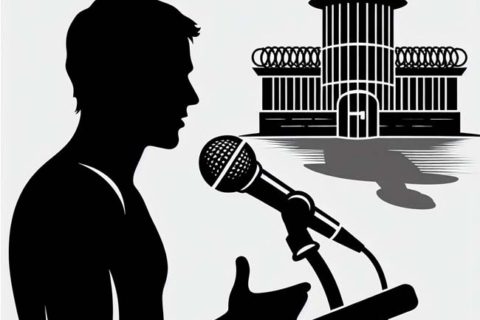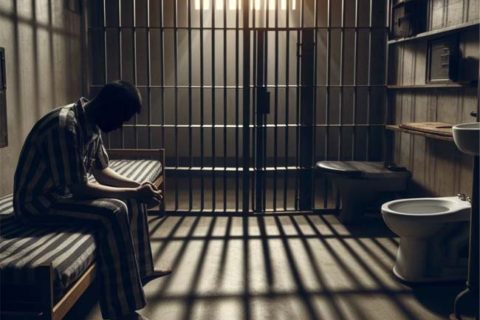The Treatment of Person with Mental Illness in Prisons and Jails: A State Survey is the research from the Treatment Advocacy Center. For those who are not familiar with the Treatment Advocacy Center, it refers to a national nonprofit organization that has the goal to eliminate barriers to the timely and effective treatment of severe mental illness. There are several things promoted by this organization, such as laws, policies and practices for the delivery of psychiatric care. Besides, it also supports the development of innovative treatments for and research into the causes of severe and persistent psychiatric illnesses, including schizophrenia and bipolar disorder.
The research titled The Treatment of Person with Mental Illness in Prisons and Jails: A State Survey is done by a number of authors, such as:
- E. Fuller Torrey, M. D.: Associate Director, Stanley Medical Research Institute; Founder and Board member, Treatment Advocacy Center
- Mary T. Zdanowicz, Esq.: Mental health law attorney, Eastham, Massachusetts
- Sheriff Aaron D. Kennard (retired), M. P. A.: Executive Director, National Sheriffs’ Association
- H Richard Lamb, M. D.: Emeritus Professor of Psychiatry, University of Southern California, Keck School of Medicine; Board Member, Treatment Advocacy Center
- Donald F. Eslinger: Sheriff, Seminole County, Florida; Board Member, Treatment Advocacy Center
- Michael c. Biasotti: Chief of Police, New Windsor, New York; Board Member, Treatment Advocacy Center
- Doris A. Fuller: Executive Director, Treatment Advocacy Center
The research is started with the executive summary. Then, it is followed by a total of four chapters, as follows:
Chapter 1:
The Chapter 1 titles History of the Problem: Have We Learned Anything in 200 Years?. It includes the history of the problem from 1820 to 1970 and from 1970 to the present. Besides, it also explains the problems associated with putting mentally ill persons in prisons and jails. Some of these problems include:
- Mentally ill prisoners remain in prison and jail longer than regular prisoners and thus contribute to overcrowding. Mentally ill prisoners, especially those not being treated, cause major behavioral problems in prisons and jails.
- Mentally ill prisoners are disproportionately abused, beaten, and/or raped.
- Mentally ill prisoners often become much sicker in prison and jail, especially if they are not being treated.
- Mentally ill prisoners are much more likely to spend time in solitary confinement.
- Suicides in prisons and jails occur disproportionately more often among prisoners who are mentally ill.
- Mentally ill prisoners cost the county and state much more than other prisoners.
- Mentally ill prisoners are much more likely than regular prisoners to return to prison or jail in a “revolving door” phenomenon.
Chapter 2:
Chapter 2 is called Legal Background for Treating Mentally Ill Persons in Prisons and Jails. This chapter has a purpose to describe the legal authority for administering medication over the objection of the inmate when they are in need of psychiatric treatment by addressing some fundamental questions, such as:
- What can prisons and jails do when an inmate refuses medication, despite all efforts to encourage compliance? Can they administer medication, despite an inmate’s refusal?
- What can be done if an inmate refuses medication and becomes imminently dangerous?
- What happens when it’s not an emergency, but an inmate’s deteriorating symptoms increase his likelihood of becoming a danger to self or others or decrease his ability to provide for self-care?
- What process is due under the U.S. Constitution when a prison or jail seeks authorization for administration of nonemergency involuntary psychotropic medication?
- How does the United States Supreme Court’s decision in Washington v. Harper influence prison and jail policies and procedures for nonemergency administration of involuntary psychotropic medication today?
Chapter 3:
Chapter 3 is named The State Survey. It includes the methods, the definitions and the results. For the methods, they include:
- Capacity of state prisons
- Prison treatment policies
- Capacity of jails
- Jail treatment policies
- Percentage of inmates in prisons who are seriously mentally ill
- Percentage of inmates in jails who are seriously mentally ill
- Information on prison and jail conditions
- Individual state mental hospital beds
- Total state mental hospital beds
- Expenditures for mental health services by state
- Assessment of efforts at jail diversion by state
In the Definitions parts, you will be able to find the definitions about anosognosia, assisted outpatient treatment (AOT), distinction between prisons and jails, emergency vs. nonemergency medication over objection, forensic patients, informed consent, psychotropic medications, serious or severe mental illness, and substituted judgment vs. best interest legal standards.
The results of the study includes all the states, such as Alabama, Alaska, Arizona, Arkansas, California, Colorado, Connecticut, Delaware, District of Columbia, Florida, Georgia, Hawaii, Idaho, Illinois, Indiana, Iowa, Kansas, Kentucky, Louisiana, Maine, Maryland, Massachusetts, Michigan, Minnesota, Mississippi, Missouri, Montana, Nebraska, Nevada, New Hampshire, New Jersey, New Mexico, New York, North Carolina, North Dakota, Ohio, Oklahoma, Oregon, Pennsylvania, Rhode Island, South Carolina, South Dakota, Tennessee, Texas, Utah, Vermont, Virginia, Washington, West Virginia, Wisconsin, and Wyoming. The Results part of every state is divided into Background and Current Laws Governing Treatment in Prisons and Jails
Chapter 4:
The last chapter, Chapter 4, is Findings and Recommendations. The findings include:
- How many individuals with a serious mental illness are now in America’s prisons and jails?
- What is it like to be seriously mentally ill and in prison or jail?
- How can prison and jail inmates be treated for their serious mental illness?
As for recommendations, they include:
- Provide appropriate treatment for prison and jail inmates with serious mental illness
- Implement and promote jail diversion programs
- Promote the use of assisted outpatient treatment (AOT)
- Encourage cost studies
- Establish careful intake screening
- Mandate release planning
In the Acknowledgements part, the authors send their gratitude to some people for their significant contributions to the content of this report, such as Heather Carroll; Kathryn Cohen, J. D.; Michelle Farquhar, J. D.; Carla Jacobs; DJ Jaffe; Kristina Ragosta, J. D.; Stephen Segal; Brian Stettin, J. D.; and Barbara Torrey. In addition, they are also grateful for some other ones, such as Melissa Bolla, Camille Knable, Judy Mille,r Talita Nakano, Shen Zhong, Leslie Broznak at the American Jail Association, Fred Wilson of the National Sheriffs’ Association, many NAMI families, and all the state officials and individuals working in jails and prisons.

A bookworm and researcher especially related to law and citizenship education. I spend time every day in front of the internet and the campus library.




